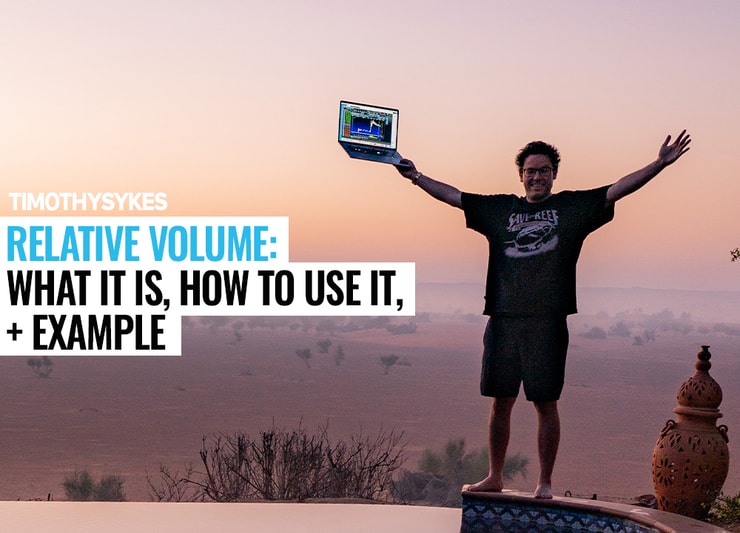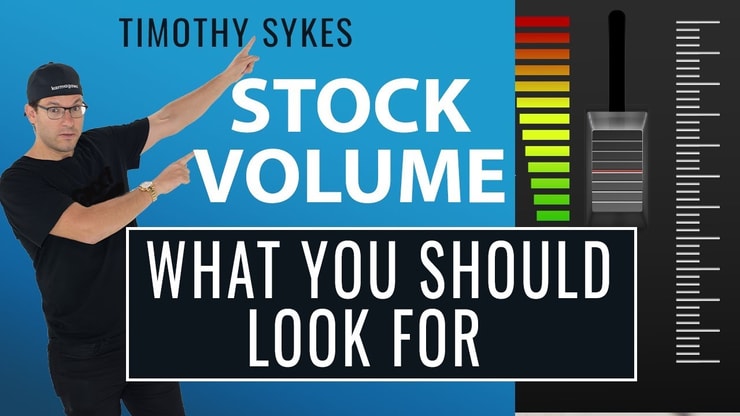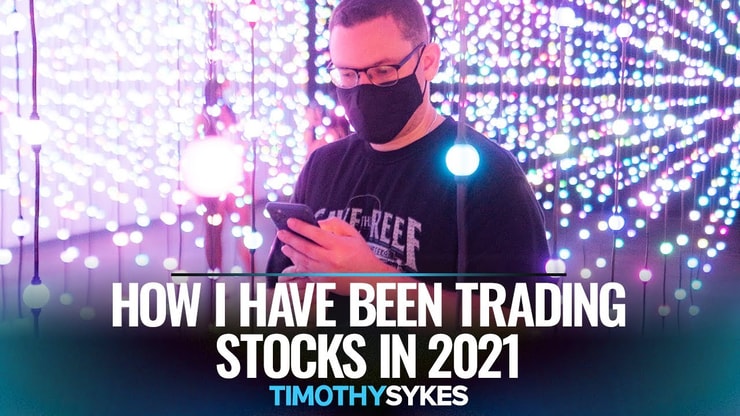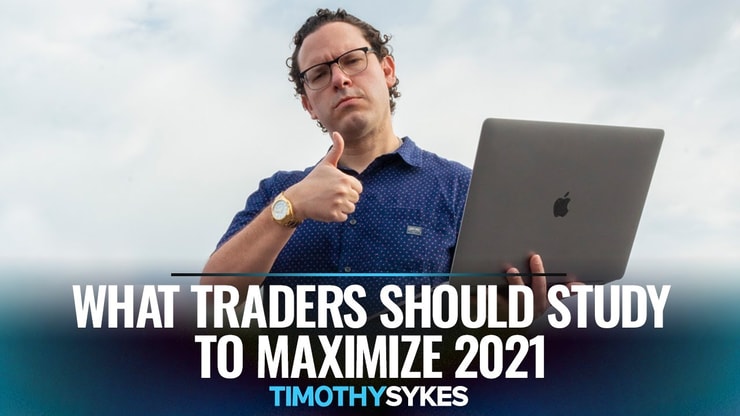Relative volume is important for day traders.
It can tell you if a stock is trading low, high, or average volume.
As a day trader, I want stocks that are trading high relative volume. Ideally due to a catalyst or stock promotion…
And the relative volume indicator can help you spot high-volume stocks quickly.
I don’t use a lot of indicators in my trading. But new traders can find indicators useful when they’re learning.
So let me break down the relative volume indicator (RVOL) for you in this post…
What is relative volume? I’ll explain. I’ll also show you how to use a relative volume scanner, and I’ll give you the relative volume calculation.
Let’s go!
Table of Contents
- 1 What’s the Relative Volume Indicator (RVOL)?
- 2 Why Is the Relative Volume Indicator Important?
- 3 What’s a Good Relative Volume for Day Trading?
- 4 How Can You Use Relative Volume When Trading?
- 5 How to Calculate Relative Volume in Real Time
- 6 Frequently Asked Questions About Relative Volume
- 7 Trading Challenge
- 8 Relative Volume: The Bottom Line
What’s the Relative Volume Indicator (RVOL)?
Relative volume (RVOL) is an indicator that tells you when a stock is trading low or high volume compared with the average volume over a specific time frame — usually five days, 30 days, or 60 days.
RVOL is expressed as a ratio.
Stocks can trade high relative volume or low relative volume. A relative volume of 2.5 means the stock’s trading 2.5 times its average volume over the selected time frame. A low relative volume would be displayed as a negative.
I’m only interested in stocks that are trading high relative volume. High relative volume typically creates more volatile moves. And that’s exactly what I like to see in the stocks I trade.
The indicator is built into some trading platforms. If it’s not included in yours, there’s an easy relative volume calculation you can use. I’ll give it to you later in this post…
Learn about the volatile penny stocks I love to trade with my FREE penny stock guide.
Why Is the Relative Volume Indicator Important?

The relative volume indicator can give you an idea of which stocks are in play and which ones probably won’t offer trading opportunities. As a day trader, I want to trade stocks that a lot of traders are watching and trading. It means more volume, volatility, and liquidity.
That can mean a tighter spread between the bid and ask, which allows me to get in and out of my positions easily.
High-volume stocks also tend to follow my patterns more closely. Low-volume stocks are choppy and unpredictable — two things I’m not interested in.
I’ve been caught in an illiquid penny stock before, and it didn’t end well. I lost over $500,000 of my own money. You can read the whole story in my no-cost book, “An American Hedge Fund.”
Don’t make the same mistake. Don’t trade illiquid penny stocks, and never believe in these companies. Always expect the worst from these sketchy companies, and you won’t be disappointed.
Take advantage of quick volatile moves on high volume, then move on.
What’s a Good Relative Volume for Day Trading?
I like to say that stocks have personalities … They can have different price action, display Level 2 differently, and they can have clean or choppy charts.
I prefer to trade OTC stocks over listed stocks. They tend to have smoother price action and clean charts. Listed stocks tend to be choppy — not my favorite stocks to trade.
You’ll find the stocks, sectors, volume, and catalysts you prefer to trade as you gain more experience. I can only tell you what works for me. And one thing a stock must have for me to even look at it is high relative volume…
What’s the perfect volume number for day trading? There isn’t one.
Too many new traders try to make trading an exact science. It’s not. There’s no one indicator that can tell you if a stock will be a good trade.
And there’s no magic relative volume ratio that’s good for all stocks. (I’ll show you why in an example later.)
That’s why I always stress the importance of studying and getting a trading education. You must consider ALL the indicators before you make a trade.
High volume is just one of them. I have seven indicators I consider before I take a trade. I cover them all in my “Trader Checklist Part Deux” DVD.
Use my Sykes Sliding Scale to prepare before every trade. It can help you learn to recognize and focus on only your best setups.
How Can You Use Relative Volume When Trading?
I don’t use a lot of chart indicators in my trading. I like to keep it simple. I use support and resistance levels on candlestick charts and volume bars.
But other traders like to use different indicators. Do what works for your trading strategy.
You can use your stock screener to search for stocks based on the relative volume ratio you want to see. You could also find the relative volume on your trading platform as an indicator called RVOL.
Not all trading platforms offer it. If yours doesn’t, you can search for stocks using the relative volume scanner on Finviz or TradingView.
Search for stocks with high relative volume as part of your morning research. I use my StocksToTrade scanner every morning to search for big percent gainers with high volume.
Get a 14-day trial of StocksToTrade for only $7. Or grab it with the Breaking News Chat for only $17.
(Quick disclaimer: I proudly helped design and develop StocksToTrade, and I’m an investor in it.)
Relative Volume Trading Strategies
Here are a few ways you can use relative volume in combination with your trading strategies…
When trading breakouts, watch for relative volume to spike as the stock breaks out. That can add confirmation to the move and improve the odds of the breakout working.
Or if you like my morning panic dip buy strategy, watch for relative volume to increase at a support level. That can mean more buyers are coming into the stock, and shorts could be buying to cover. It could be a sign the stock is bottoming.
The same could happen around areas of resistance. If there’s a big spike in relative volume and the stock fails to break above resistance, it can be a sign there are a lot of sellers.
But it’s not an exact science. A stock could reject a breakout level and come back later to break out successfully. That can create a bigger move if it triggers a short squeeze.
Again, it comes down to lining up multiple indicators before making a trade.
Want to build your trading education foundation? Join my 30-Day Bootcamp.
It’s a month’s worth of lessons with daily assignments and homework. And you can work at your own pace and repeat it as many times as you like. Bonus: It comes with “The Complete Penny Stock Course” book and my “Pennystocking Framework” DVD.
How to Calculate Relative Volume in Real Time

Here’s the relative volume calculation, as promised. And it’s pretty simple…
Relative volume = Current volume / Average volume
Keep in mind that the number will change throughout the day as volume increases or plateaus.
Using the Relative Volume in a Real-Life Example
I said earlier that there’s no perfect relative volume ratio for all stocks. Now I’ll show you why…
StocksToTrade displays the average volume for a stock in the basics box. It defaults to 60 days.
Say a stock has traded an average volume of 100,000 shares a day over the last 60 days. Then it pops up on your relative volume scanner with an RVOL of 5:1. Sounds like high relative volume, right? Not really. That ratio means it only traded 500,000 shares that day.
That’s not enough volume for me. I want stocks trading millions of shares.
Let’s look at another example. Say a stock traded an average of a million shares daily over the last 60 days. If it shows up on your relative volume scanner with an RVOL of 5:1, that’s 5 million shares in volume. Now, that’s a stock I’m more interested in.
There’s a big difference between trading a stock with 500,000 shares of volume and trading one with five million. It’s the difference between a stock that’s in play and one that nobody cares about.
Trading a stock with low volume can make it hard to cut losses quickly. Fewer buyers make it harder to sell. You could end up having to hit the bid just to get out. And that can leave you with a bigger loss than you planned.
Forget about trying to find the next Microsoft or Tesla in penny stocks. Don’t trade low volume stocks thinking you’ve found the next big technology or product. The chances of finding an undiscovered gem are slim. Most of these companies fail.
Stick to trading stocks that are in play. Take advantage of the patterns that repeat over time, and take what the market gives you.
Frequently Asked Questions About Relative Volume
More Breaking News
- IREN’s Unexpected Surge: Breaking Down the Latest Performance Data
- Is XP Inc. A Hidden Gem After Latest Target Cuts?
- Is Dogwood Therapeutics Inc. Stock Poised for a Turnaround?
What’s Considered Low Volume?
That depends on the stock’s average volume. What’s considered low volume for one stock could be considered high for another. It’s not an exact science. You have to find what works best for your setups and preferences.
What’s the Best Volume Indicator for Stocks?
I use volume bars at the bottom of my charts and compare them to past volume spikes when I look back at the chart over different time frames. But you can use any volume indicator you like. The relative volume indicator is a ratio of current volume compared with average volume.
What’s Relative Volume on Finviz?
You can use the stock scanner on Finviz to scan for stocks based on relative volume. Select the ratio you want to search for from the relative volume dropdown list. Finviz will display stocks that match your criteria.
What‘s Relative Volume in TradingView?
TradingView also has a relative volume stock scanner. Enter the relative volume ratio you want to search for, then select ‘above,’ below,’ or another criterion from the dropdown list. TradingView will display stocks that match your criteria.
What’s Relative Volume Standard Deviation?
Relative volume standard deviation is a different technical indicator from simple relative volume. Relative volume standard deviation is calculated as the volume ratio relative to the simple moving average.
Trading Challenge
I teach my strategies for trading stocks with high relative volume in my Trading Challenge. If you want to learn everything I know from my 20+ years of trading penny stocks, apply today.
If you’re accepted, you’ll get access to thousands of video lessons, weekly live trading and Q&A webinars, all my DVDs, archived webinars, and access to my Challenge chat room.
But I have to warn you: My Challenge is strictly for the most dedicated students. I don’t have time to waste on lazy people looking for hot stock picks. I want students who are dedicated to learning the process, the mindset, and the right trading rules.
My goal as a teacher is for all my students to become self-sufficient traders. If you’re ready to put in hours of hard work and studying like the millionaire traders* that have come from my Challenge, apply now.
(*Please note that these kinds of trading results are not typical. Most traders lose money. It takes years of dedication, hard work, and discipline to learn how to trade. Individual results will vary. Trading is inherently risky. Before making any trades, remember to do your due diligence and never risk more than you can afford to lose.)
Relative Volume: The Bottom Line

High relative volume is an important indicator to look for when considering which stocks to trade.
It can mean there are more traders interested in the stock, which can indicate the potential for bigger, volatile moves. That’s how I can take advantage of quick spikes, take the meat of the move, and move on.
But it’s not an exact science. More volume can also mean more selling.
That’s why you should never rely solely on one indicator to determine whether a stock is a good trading opportunity. Line up multiple indicators before you make a trade. That can help you focus on trading only the best setups.
Although I don’t use this indicator myself, you might find it works for you. I have 20+ years of experience day trading penny stocks. I know what I like and what I don’t.
New traders lack that experience. Try different indicators like RVOL to find out what works for you and your trading strategies.
If you want to learn how I trade, apply for my Trading Challenge today.
Do you use the relative volume indicator in your trading? Let me know in the comments … I love to hear from you!







Leave a reply